Brands are built over time with many blocks contributing to the construction of the empire.
Some blocks are big, some are small, some are early in the process, some are late.
Brand mood boards might not seem like an important part of the branding process, but look closer and you’ll see their strategic place.
Mood boards play a pivotal role in aligning teams on a creative direction and turning ideas into a visual brand.
In this article, you’ll learn how to build effective mood boards to design brands born from strategy.
What Is A Brand Mood Board?
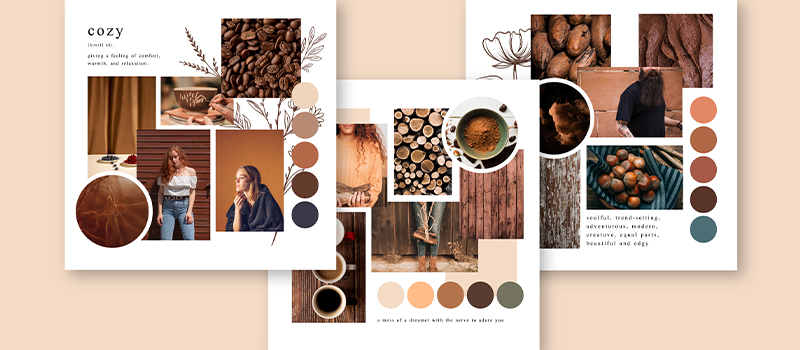
When you think of a brand mood board, you might think of a visual feast, a collage of pretty pictures designers love to get lost in.
I for one can attest to the many hours lost of endless research trying to make a mood board sing.
But the more I learned about strategy, the more I realised the power mood boards had in turning a strategy into a living, breathing visual brand with all the considerations of who the audience is and how the brand will resonate with them.
Brand mood boards are more than just a canvas of pretty pictures.
They’re a strategic tool translating strategic elements from differentiation and verbal identity, into visual elements including logos, colors, typography, textures, and beyond.
Why is a Branding Mood Board Important?
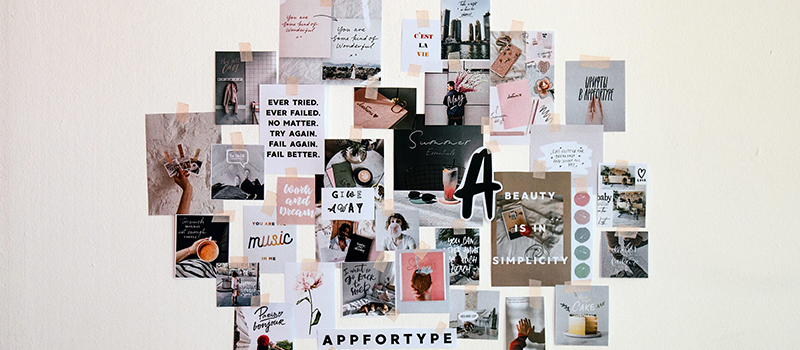
Picture this: you've got an incredible idea for your brand, a vivid vision that excites you.
But here's the catch -
Transferring this vision from your mind to reality, and more importantly, to your team or clients, can be like translating an ancient, forgotten language.
The translation of visuals through words simply can’t compete with visuals that capture the mood. Enter the trusty mood board.
A branding mood board goes beyond words.
It captures your brand's spirit, its mood, visually expressing the look, feel, style and mood your brand should align with.
It's about aligning your team on the same page, ensuring that your brand identity isn't lost in translation.
It helps to bring what’s in the mind of the creative, into the real world.
PRO Brand Strategy BluePrint
Build Brands Like A Pro Brand Strategist

Why You Should Make a Mood Board for Your Brand?
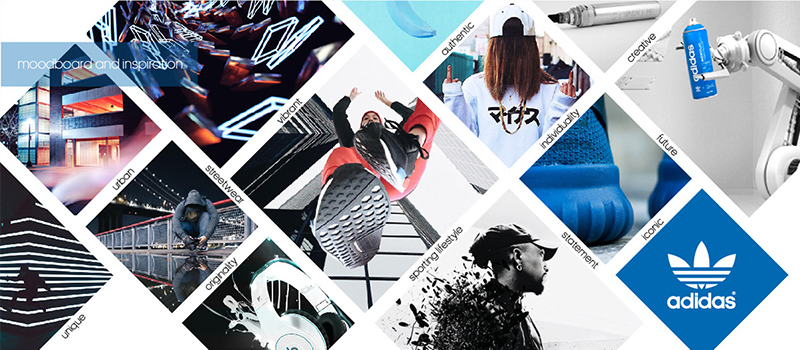
Imagine having a valuable resource that guides your brand's visual direction, a visual metaphor that sets the tone for your entire branding process.
That's what creating a mood board does.
It helps you zero in on your brand's aesthetic, the look and feel you're going for.
When you make a mood board, it's like you're constructing your brand's visual vocabulary.
The colors, images, and elements you choose convey a message, helping you to define your brand's personality more accurately.
When Should You Make a Mood Board?
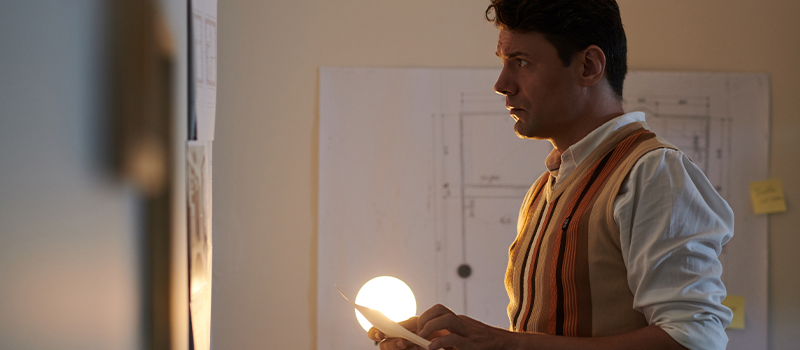
A mood board isn’t something that’s created as part of the branding process for shits and giggles and it’s not an opportunity to get lost in hours of endless “research” either.
It serves a purpose and an important one at that. Visual direction to align with the strategy.
By the time the need for visual direction and designing the brand from a concept into life, the strategy should have already been defined.
Positioning, personality, verbal identity, messaging and stories.
These are all concepts that should be solidified at this stage, leading to a refined set of tools and strategic guidance to set the tone of the visuals.
Digital or Physical Mood Board
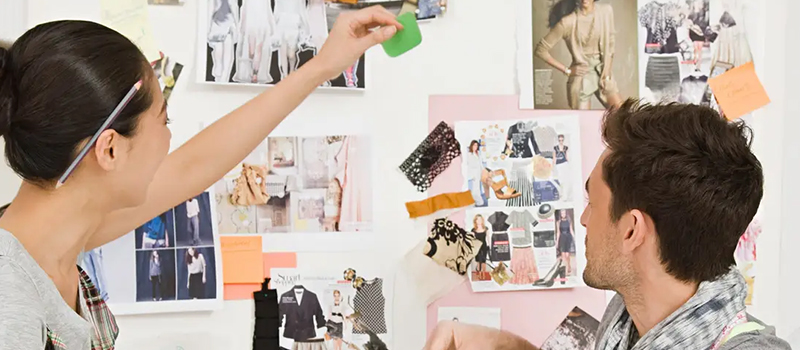
When it comes to mood boards, the question often arises: should you go digital or physical?
Although mood boards were traditionally created physically, with magazine and newspaper clippings, digital tools have made the process much more efficient.
Why would you scourer physical sources when Google can do so much heavy lifting for you.
Today, an efficient designer can nail down an effective mood board in under an hour with time for a coffee.

Digital mood boards provide flexibility and convenience. They're easy to edit, share, and collaborate on, making them a valuable tool, especially in our increasingly remote work environments.
That said, for bigger projects, physical moodboards forces a more selective mindset and provides an opportunity to collaborate with teams.
Physical mood boards provide a tactile experience. You can touch and feel the textures, experience the colors more authentically, and engage with the board in a three-dimensional space.
Physical mood boards, often preferred by traditional creatives, offer an old school charm that digital boards can't replicate.
The choice between a physical and digital mood board hinges on your creative process, resources, and the project at hand.
You might even find a hybrid approach works best, beginning with a physical board to engage your senses, then digitizing it for ease of sharing and editing.
How to Build Your Brand with a Branding Mood Board
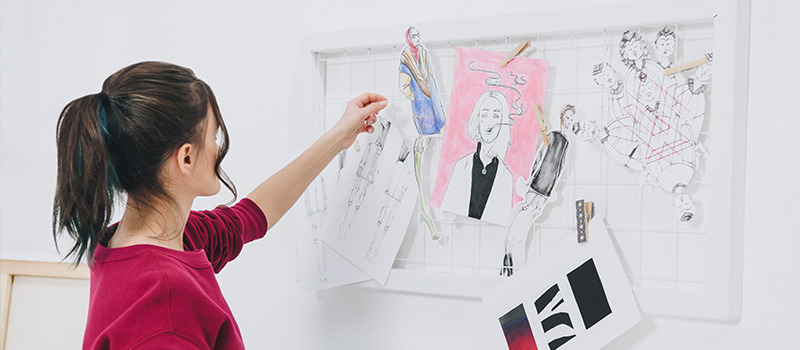
Creating a brand mood board is a valuable step in the branding process.
It involves collecting and curating visual assets that encapsulate your brand's personality, vision, and identity.
Creating moodbaords is not about jumping onto google and randomly searching for images you like. No, there’s method to the madness and that method is intertwined with the strategy.
The strategy answers important questions to guide the mood board and ultimately the visual brand. Those questions include:
Who is our audience?
What do the want, need fear and desire?
How are we different?
What’s our personality and verbal identity?
What role do we want to play?
What do we want to communicate?
The answers to these questions will act as a guide for everything from your choice of colours to your chice of typography, your style of logo and beyond.
Once you have a clear understanding of your strategic direction , it's time to dive into the fun part: creating your mood board!
This process involves selecting and arranging various design elements supporting images that visually communicate your brand's identity.
Explore Brand Strategy
Programs & Tools
Define Your Audience

Although we touched on this above, it deserves a special mention.
A mood board is not about the designer, the creative director, the strategist or even the business leaders commissioning the work.
Everything in branding comes back to one group of people and every decision made should consider them.
That group, you might have guessed, is the audience.
Of course knowing their demographics and psychographics from their age to their interests and values will give you some insights. But to really resonate with them visually, you need to understand their personality.
Visuals communicate traits at a rate of speed that no other form of communication can compete with.
Often a brand gets one shot at resonating visually. Brands that have taken their time and done their homework about who their audience is and what they like, will have a much greater chance of showing up in a way that will resonate.
What To Include In Your Branding Mood Board

So, what goes into a brand mood board?
It's not just random images;
it's a purposeful selection of visuals and design elements.
These should tell your brand story and help to create a visual representation of your brand's vibe.
Let's break down the key elements you should consider.
Colors & Color Palette
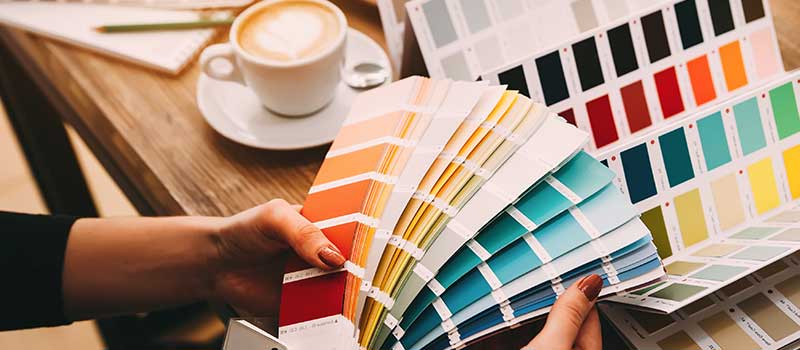
Color is a powerful communicator in branding.
The colors you choose should evoke the right emotions and perceptions about your brand.
They'll form the basis of your color palette, which will feature across all visual elements, from your logo design to your website.
Whether it's the vibrancy of red or the tranquility of blue, your color choices play a crucial role in defining your brand mood.
Photos/Images

Photos and images are the heart of any mood board. They help to convey the visual style and mood you're aiming for.
Use images that reflect your brand's aesthetic and style.
These could be anything from product shots, lifestyle images, architectural photos, or black and white imagery.
Patterns
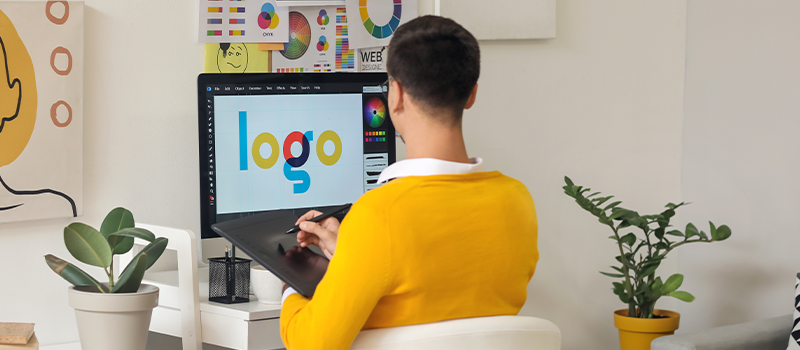
Patterns can play a part in your brand's visual identity.
They can be used across a variety of platforms, from product packaging to website backgrounds.
Patterns can be bold and striking or subtle and minimalistic, depending on your brand's style.
Typography / Text

Don't forget about text! This includes typography, quotes, or any written words that resonate with your brand's tone of voice.
Typography can say a lot about a brand's personality, whether it's a fun and playful script or a clean and modern sans serif.
Pre-existing typefaces come with pre-existing characteristics while custom fonts can have specific characteristics designed into them.
Either way, the name of the game is to alignb the type with the charactersitics of the brand.
Anything Else You Find Visually Inspiring!

Finally, your brand mood board could include anything else that inspires you.
This could be fabric swatches, illustrations, specific fonts, or even key words.
These should all align with your brand vision and help to paint a picture of your brand's identity.
Branding Mood Boards in Action (Examples)
Brand Personality Mood Board
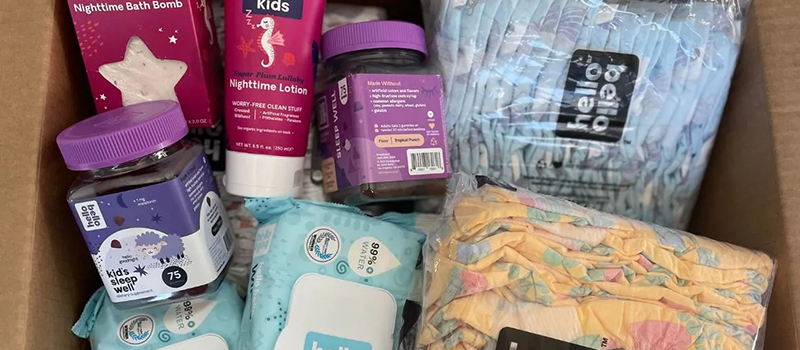
A brand personality mood board can be a powerful tool to establish the tone and voice of your brand.
For instance, if your brand's personality is playful and fun, your mood board might include vibrant colors, whimsical imagery, and playful fonts.
To exemplify this, let's look at the playful brand personality mood board for Hello Bello, a baby product company co-founded by Kristen Bell and Dax Shepard.
The brand's mood board is filled with bright and playful colors, reflecting the brand's ethos of fun and positivity.
This mood board informs the brand's packaging, web design, and social media aesthetics, effectively communicating their brand personality to the customers.
Identity Mood Board
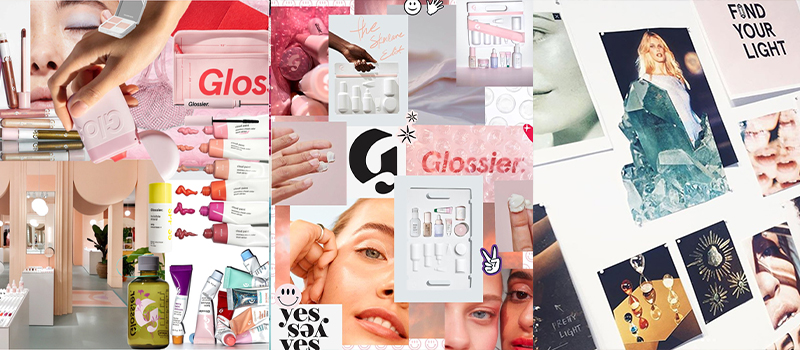
An identity mood board can help outline the visual elements that make up your brand's unique identity.
From color schemes to typography, these boards help ensure consistency across your brand's visual assets.
For instance, the identity mood board for Glossier, a beauty company, combines pale pinks, modern typography, and minimalistic design elements to mirror the brand's "beauty in simplicity" ethos.
The mood board successfully translates into the brand's packaging, website, and storefronts, creating a consistent and recognizable brand identity.
Web Design Mood Board
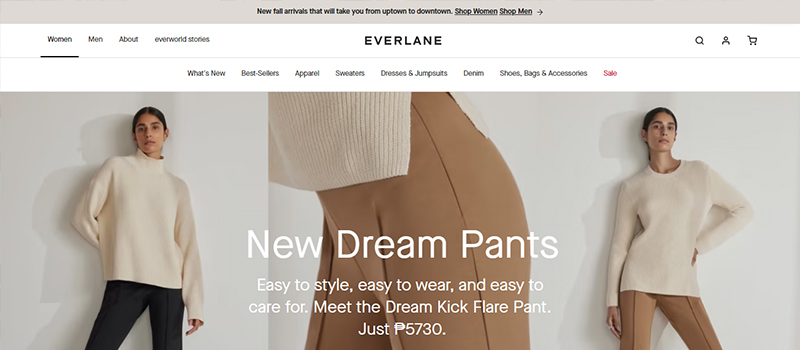
A web design mood board can guide the visual and interactive elements of a website, ensuring that the design aligns with the brand's mood and identity.
Consider the web design mood board for Everlane, an ethically-sourced clothing company.
The mood board uses a mix of neutral colors, clean lines, and simple typography to reflect the brand's commitment to transparency and simplicity.
The result is a user-friendly website design that reflects the brand's ethos and appeals to its target audience.
Each of these examples shows how a well-curated mood board can guide the creation of a cohesive and impactful brand identity.
It serves as a visual reference that ensures consistency in design and communication across all platforms.
Whether you're establishing your brand personality, creating your brand identity, or designing your website, a mood board can be an invaluable tool.
Tips for a Successful Branding Mood Board Design
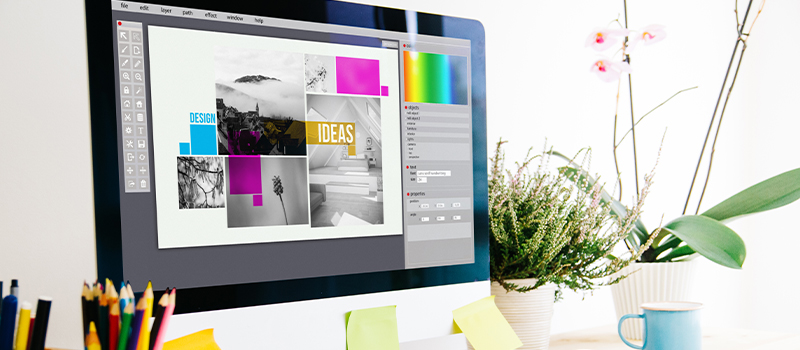
Creating a mood board can be fun, but it's also important to keep the design process focused and intentional. Here are a few tips to ensure a successful mood board design:
Keep it Simple: Less is more when it comes to mood boards. Focus on quality over quantity. Too many visuals can make your mood board feel overwhelming and confusing.
Stay Consistent: While a mood board is about exploring ideas, it should still have a coherent theme. The visuals should all connect and relate to each other in some way.
Take Your Time: Don't rush the process. Finding the right images and design elements takes time. Consider this as part of the branding journey.
Get Feedback: Don't create your mood board in a vacuum. Share it with others and seek their input. They might offer valuable insights you hadn't considered.
Branding Mood Board Software
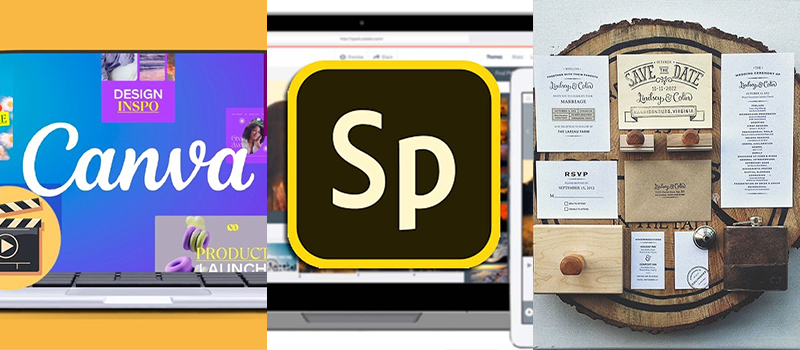
While there's nothing wrong with creating a physical mood board, using software can streamline the process.
It allows for easy editing, sharing, and saving of your work. Here are a few options:
Canva: Canva is a user-friendly design tool with a vast library of templates. It offers a free version, but you might find the premium features worth the investment for your branding needs.
Adobe Spark: A part of Adobe's suite of creative tools, Adobe Spark offers the designer a simple interface for creating mood boards. It provides a range of customization options to help your brand mood board shine.
Moodboard: As the name suggests, Moodboard is dedicated to creating mood boards. It's straightforward, easy to use, and allows for sharing and collaborative editing.
Remember, the right software can make important step of the mood board creation process smoother and more enjoyable, freeing up your time to focus on the good stuff: creating a visual representation that embodies the soul of your brand.
How to Use Your Branding Mood Board
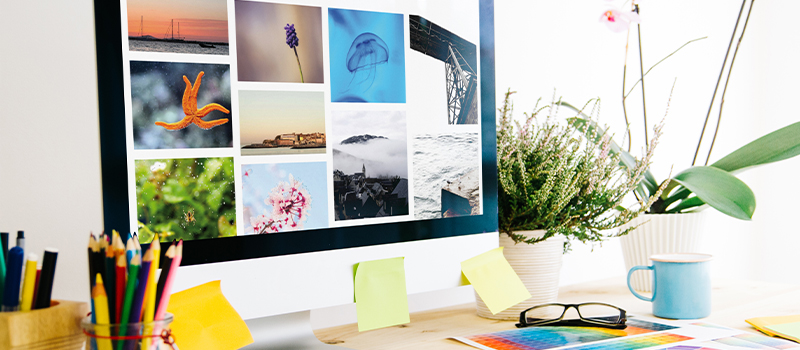
Once you've completed your branding mood board, it's time to put it to use! It should act as a visual guide that will inform all of your future creative decisions and projects. Here's how:
Logo Design: Use your mood board to influence the design of your logo, from its shape and style to the colors and typography used.
Website Design: Your website should embody your brand mood. The mood board can guide the color scheme, imagery, typography, and overall aesthetic of your website.
Product Packaging: If you sell physical products, your mood board can inform the design of your packaging, keeping it consistent with your brand.
Social Media Content: Your mood board can help guide the content you create and share on social media, ensuring it aligns with your brand's aesthetic and mood.
Remember, your mood board isn't set in stone. It's a living document that should evolve as your brand does.
Don't be afraid to revise and update it as your brand grows and changes.
Over To You
A branding mood board is a potent tool. It serves as a visual blueprint for your brand's identity, helping to ensure consistency across all platforms and projects. It allows your team and any external collaborators to clearly understand your brand's vision, making sure everyone is on the same page.
Creating a mood board can be a fun and enlightening process. It allows you to explore your brand's personality and mood in a creative, visual way.
The whole mood board process can reveal new insights into your brand, helping to refine and strengthen your identity.
Remember, a successful mood board is one that accurately captures the essence of your brand. It should feel authentic and true to your brand's vision.
If it does, it will serve as a reliable guide that will help inform your creative decisions and shape the direction of your brand.
With a well-crafted branding mood board, your brand's identity can come to life in a cohesive, compelling, and visually engaging way.
It's a small investment of time and effort that can yield significant returns for your brand.
So why not start creating your mood board today?
It could be the beginning point of a beautiful brand story.
FAQs
1. What is a brand mood board?
A brand mood board is a visual tool used in branding to define and communicate a brand's mood, personality, and visual identity. It usually includes a mix of images, colors, textures, patterns, and text.
2. What is the difference between a brand board and a mood board?
While both serve a similar purpose in branding, a brand board typically includes finalized elements like logos, color palettes, typography, and imagery. A mood board, on the other hand, is more about exploring ideas and inspirations for these elements.
3. How do I create a brand mood board?
Creating a brand mood board involves choosing elements (like colors, images, textures, and patterns) that reflect your brand's mood and identity. Tools like Canva, Pinterest, and Adobe Spark can help in inspiration for creating a digital mood board.
4. Why is a brand mood board important?
A mood board serves as a visual guide for your brand's identity, helping to define its mood and personality. It's particularly useful for aligning your team or communicating your brand's vision to clients.
5. What should a brand mood board include?
A brand mood board usually includes images, color palettes, textures, patterns, and text. It might also contain elements like fabric swatches, sketches, or anything else that represents your brand's vibe.
On-Demand Digital Program
Brand Master Secrets
Make the transition from hired-gun to highly valued brand strategist in less than 30 days. The systems, frameworks and tools inside this comprehensive program are all you need to level up.







